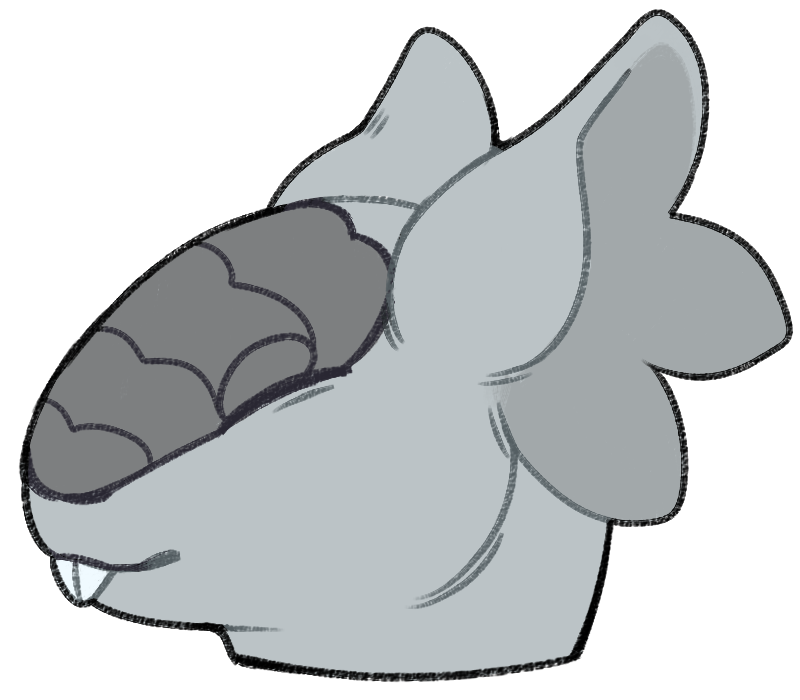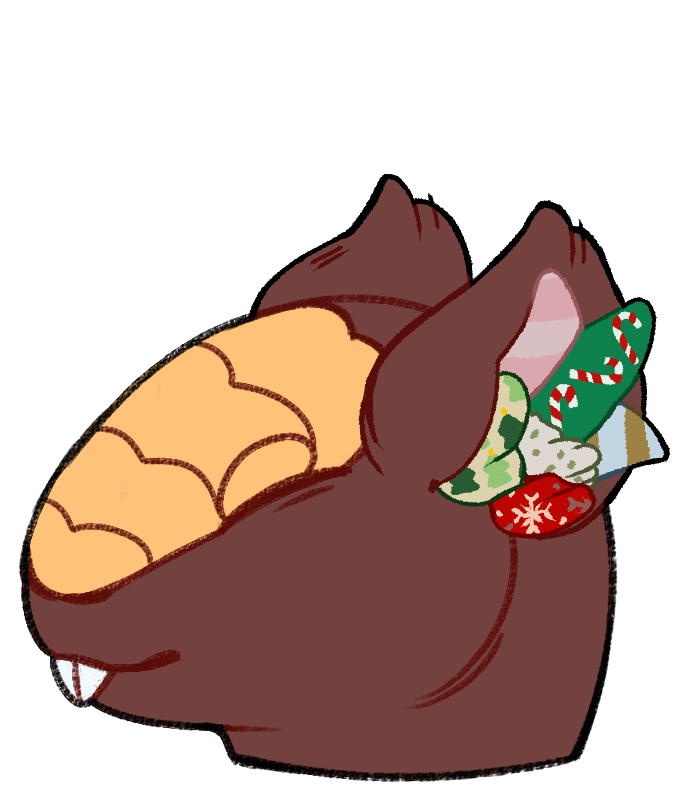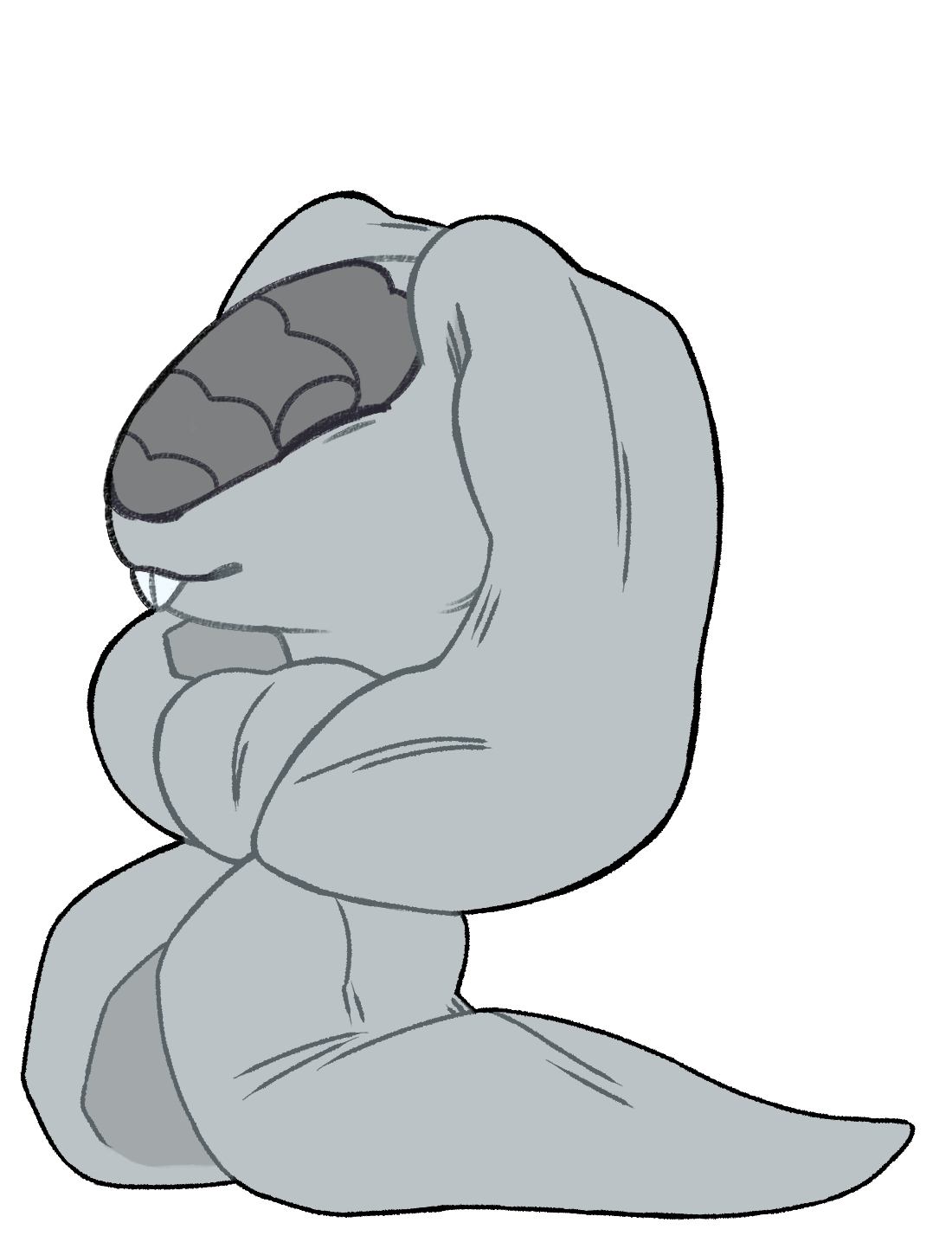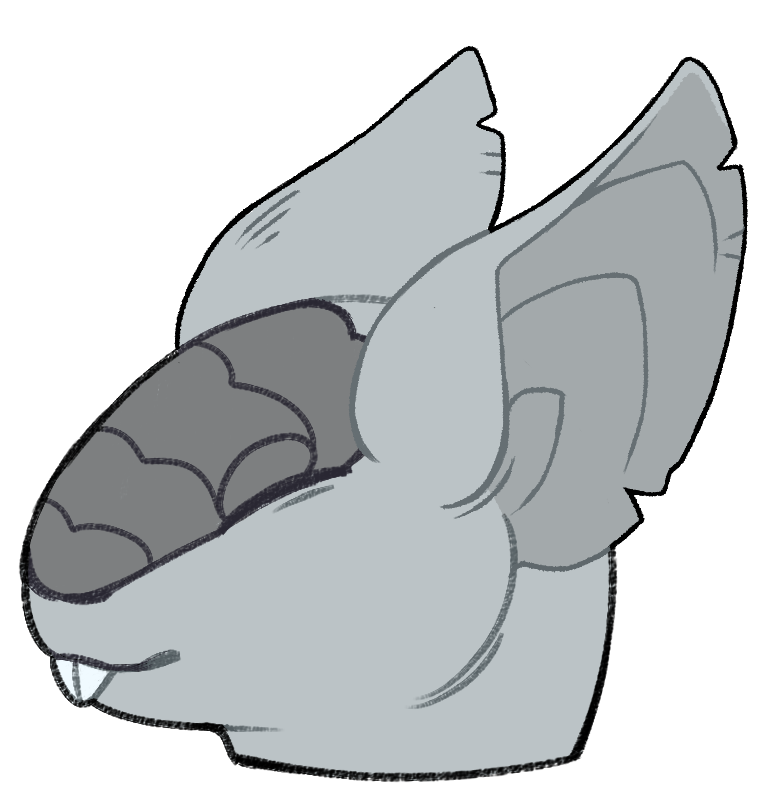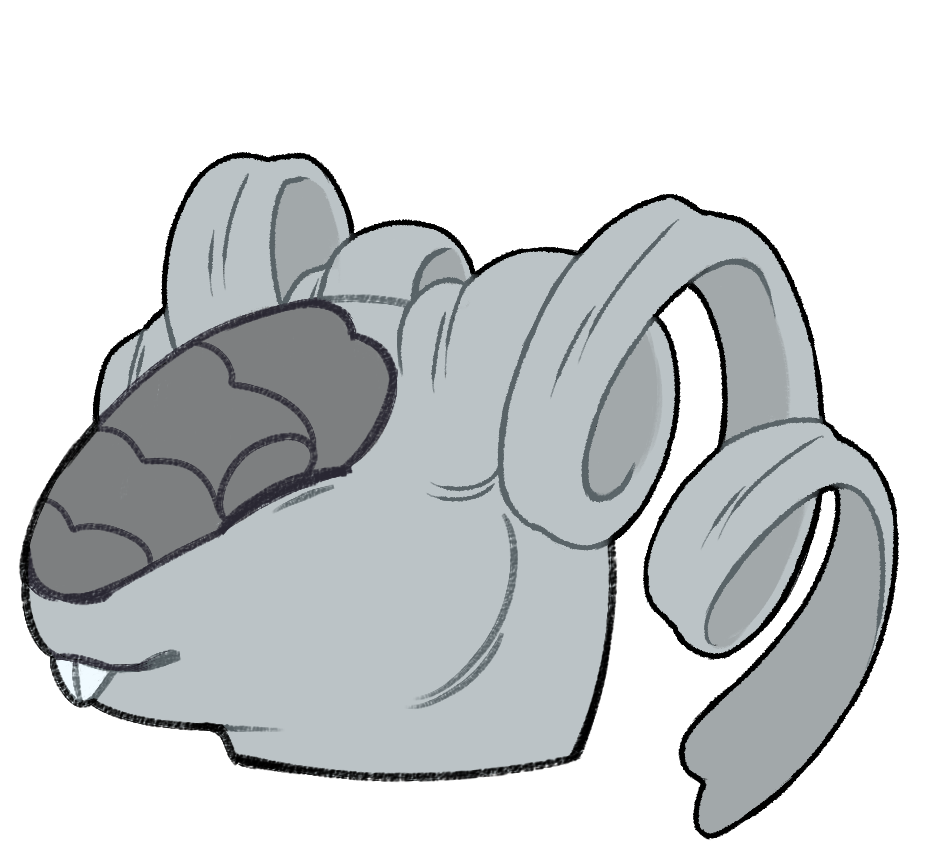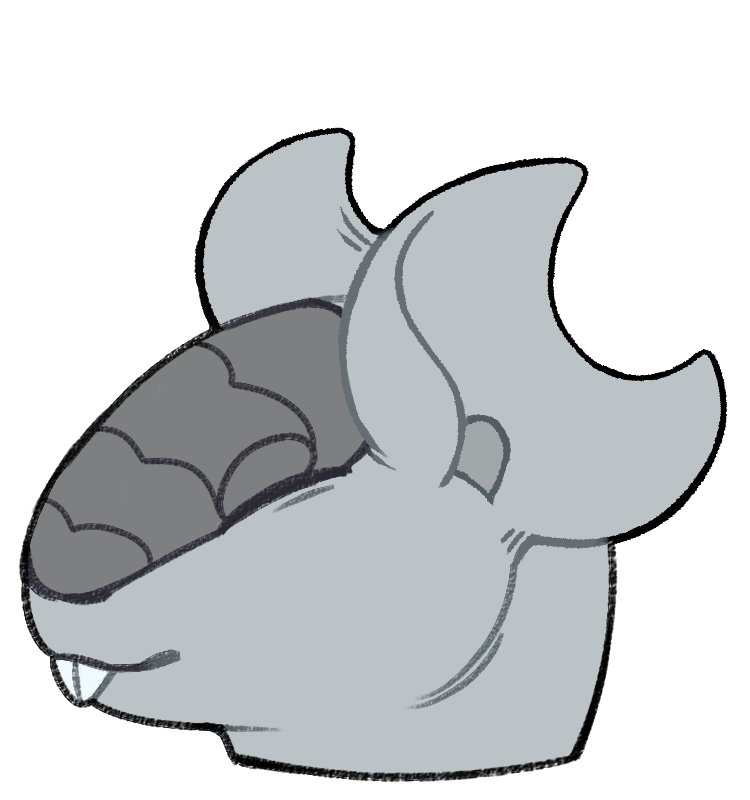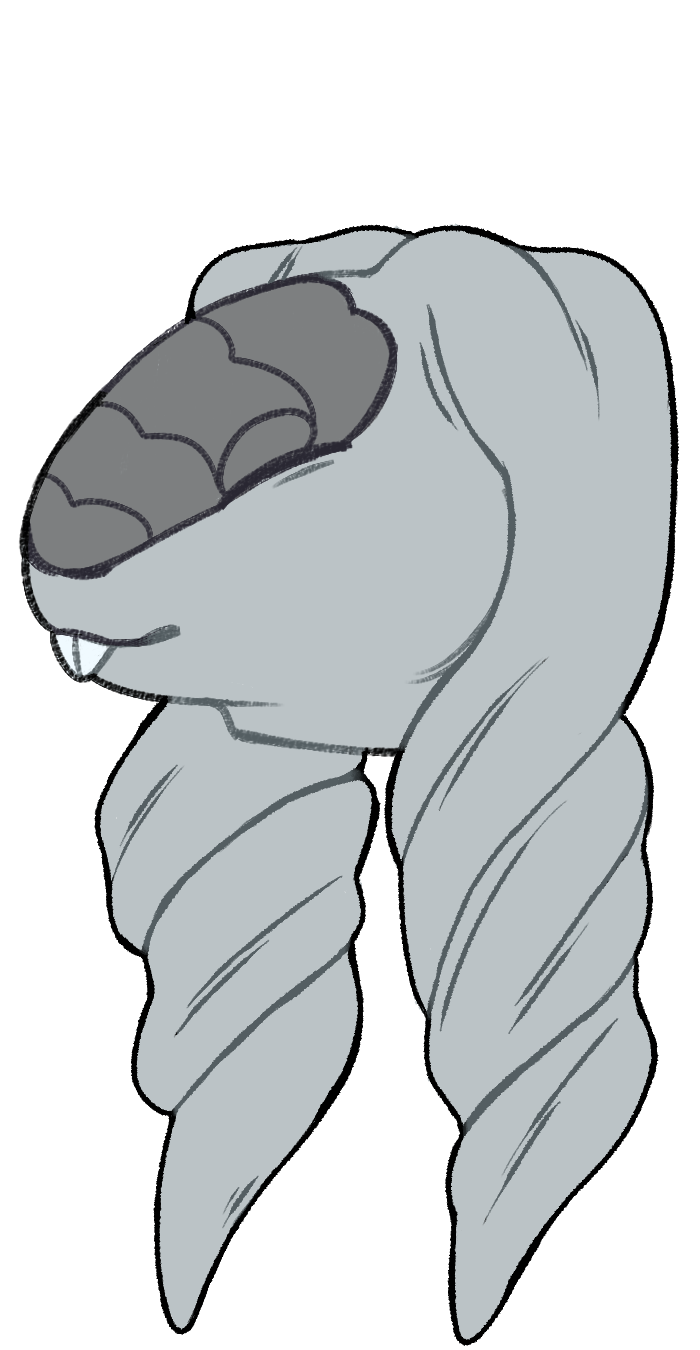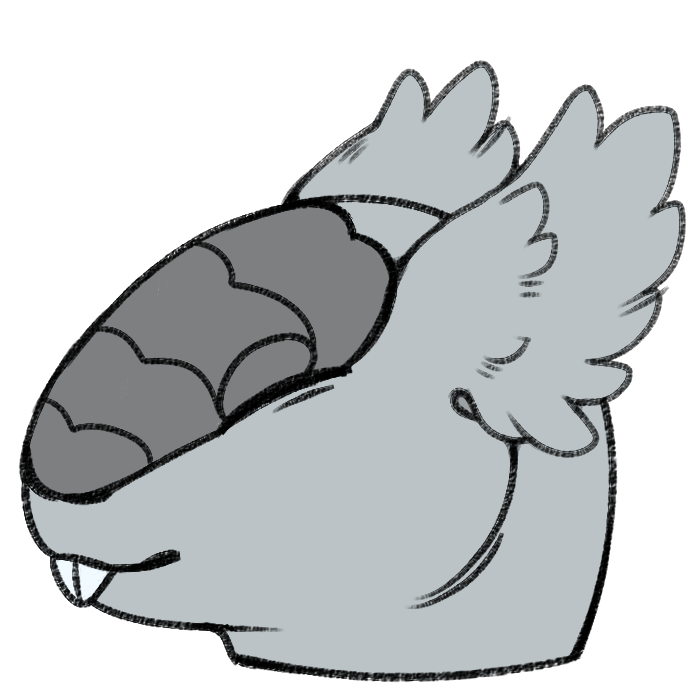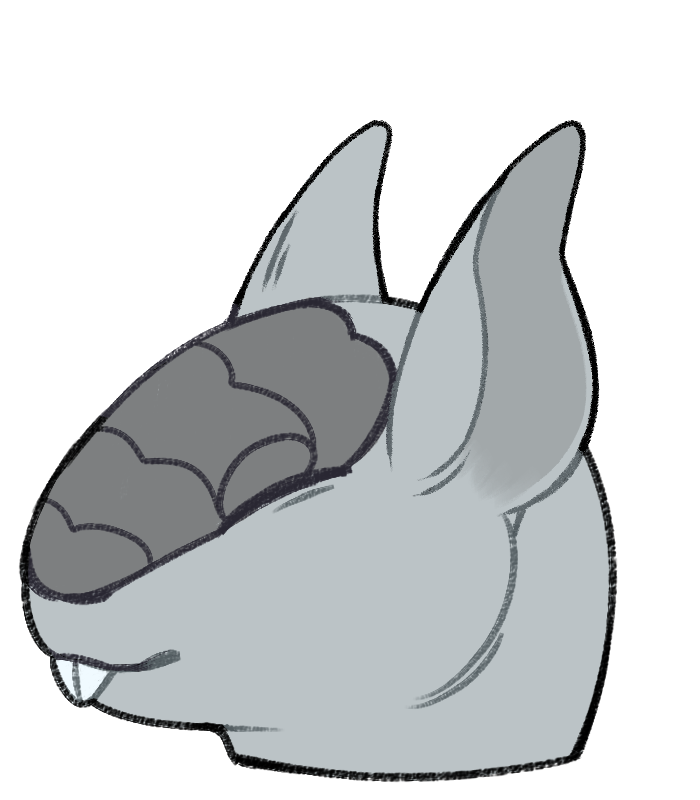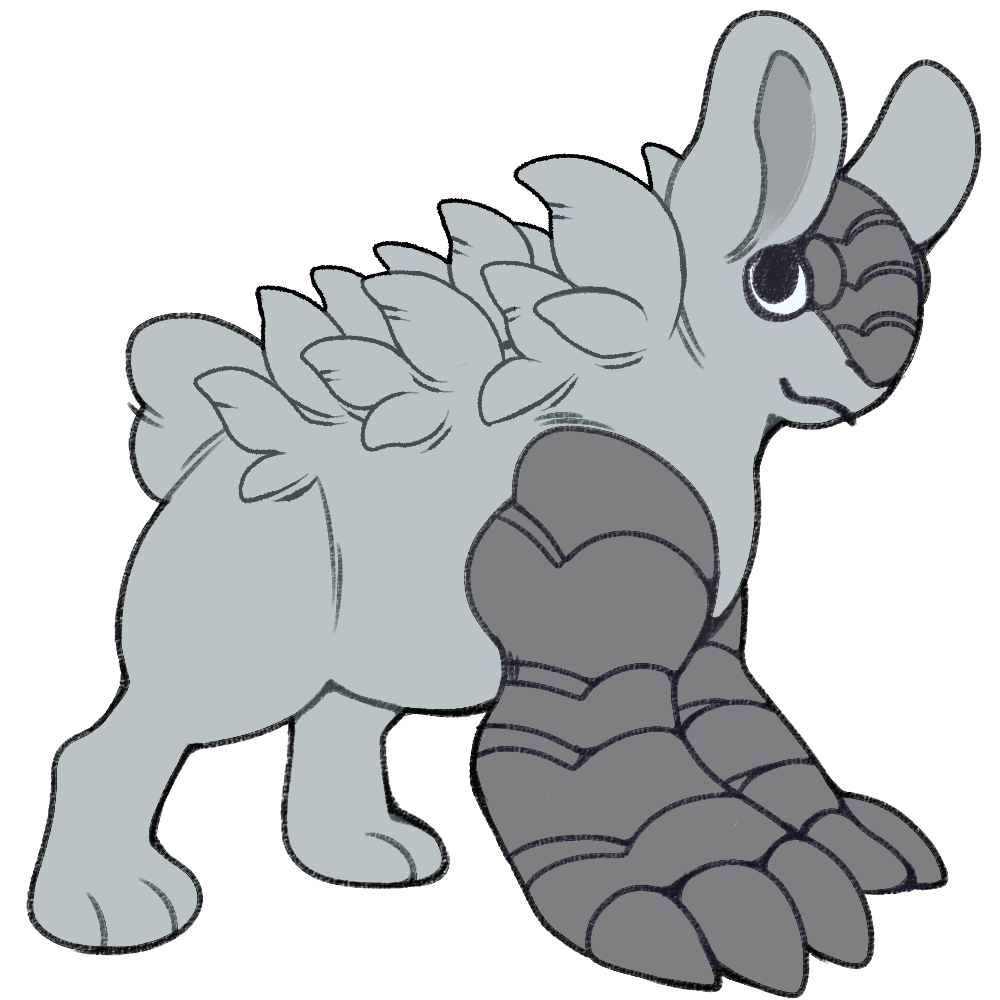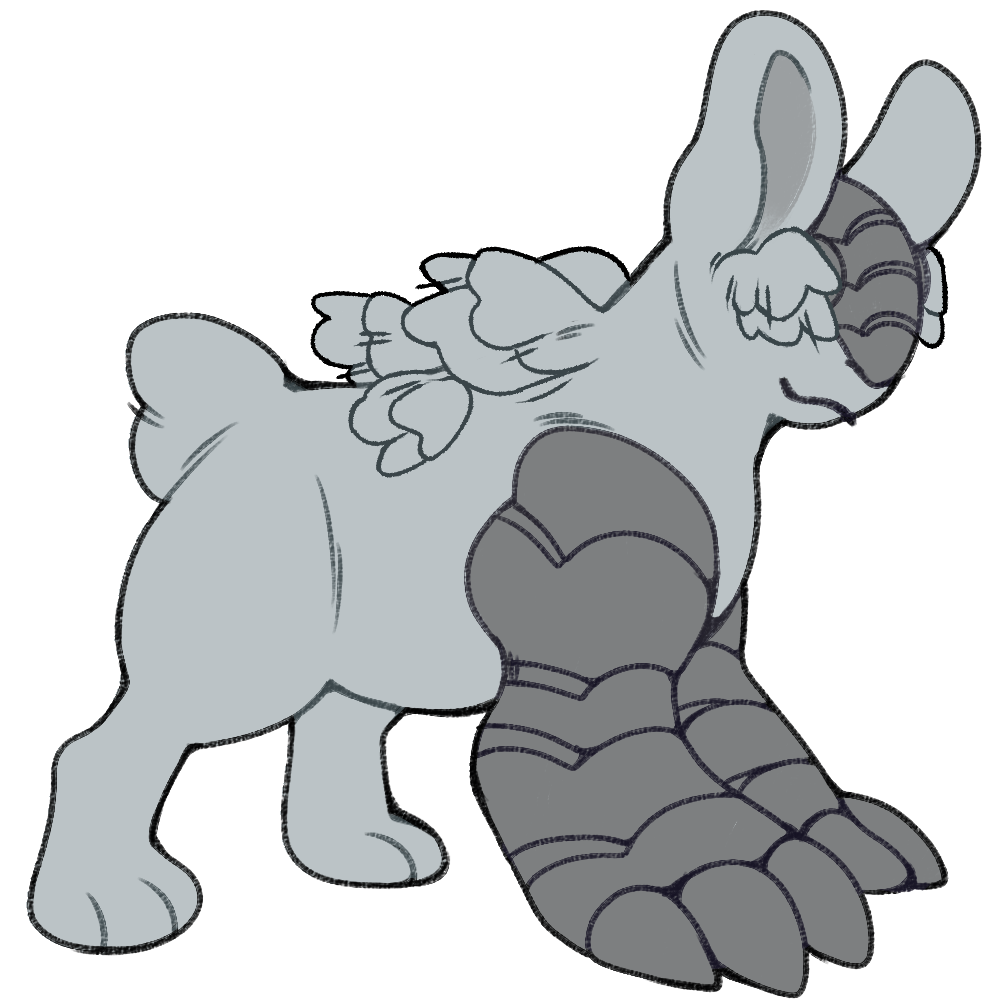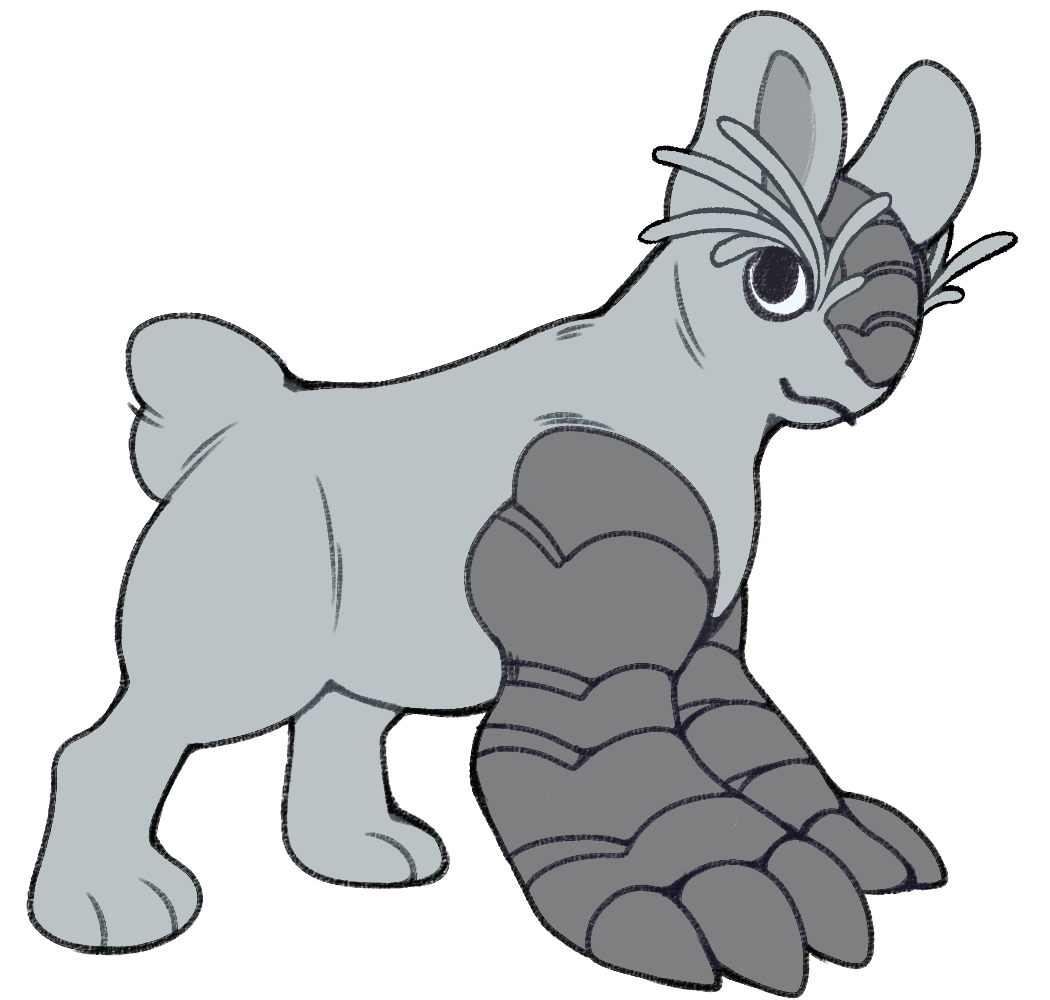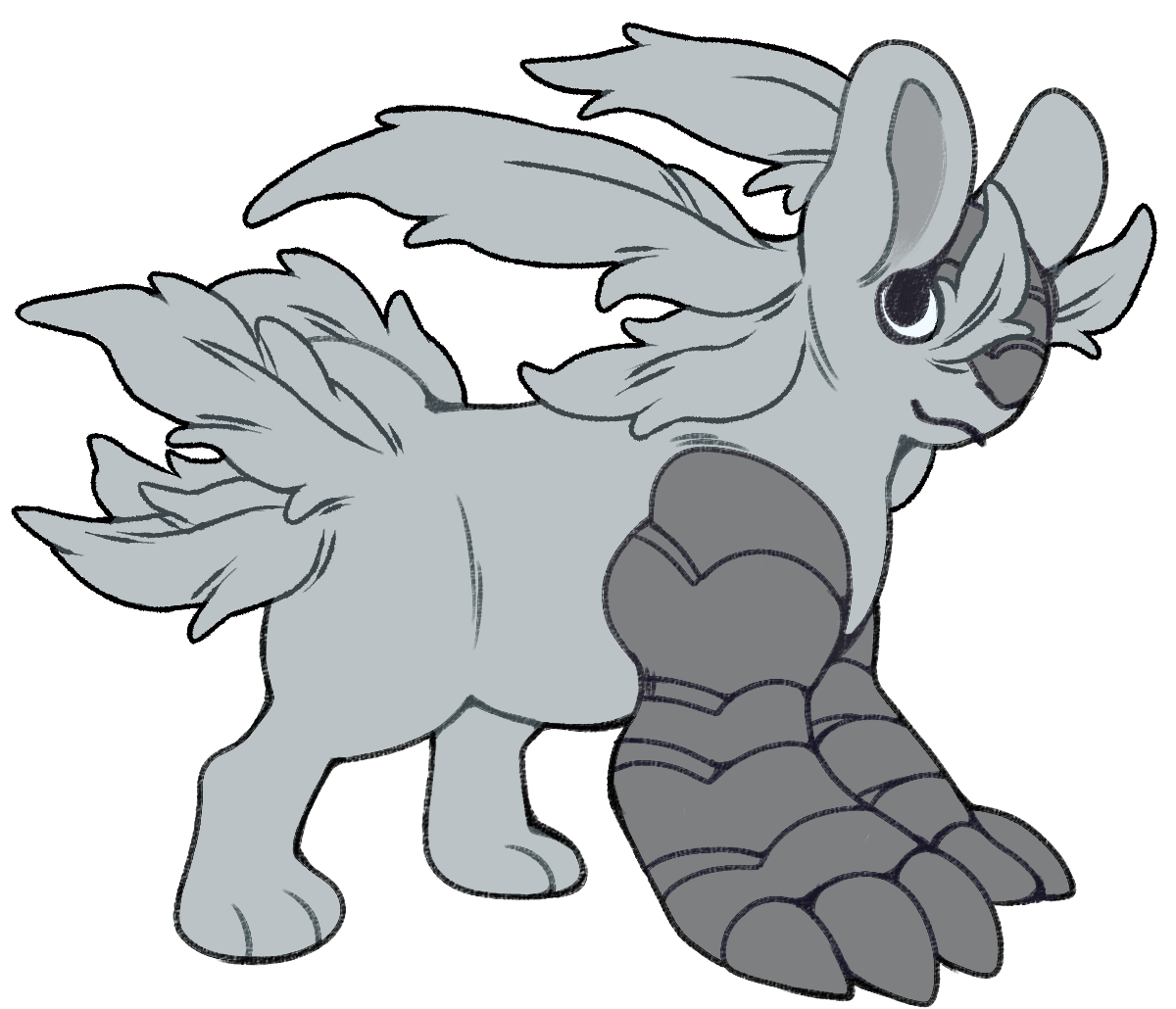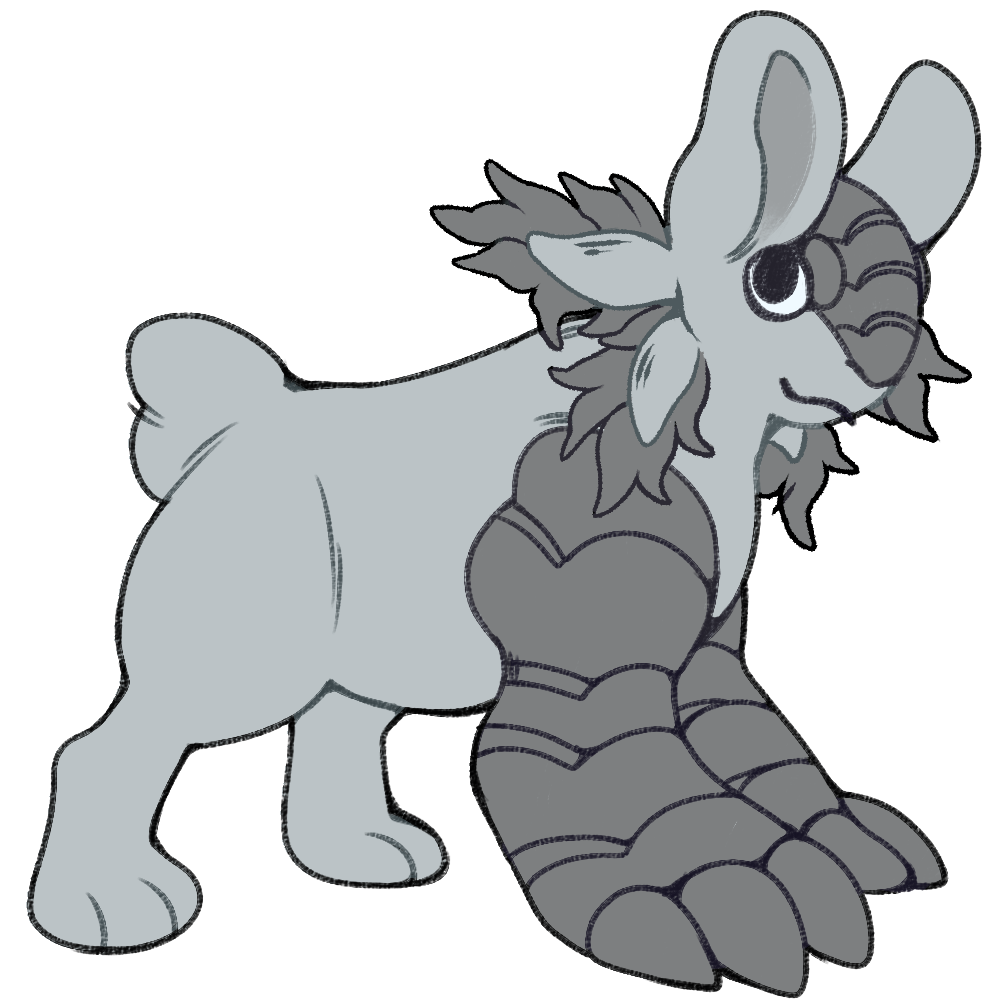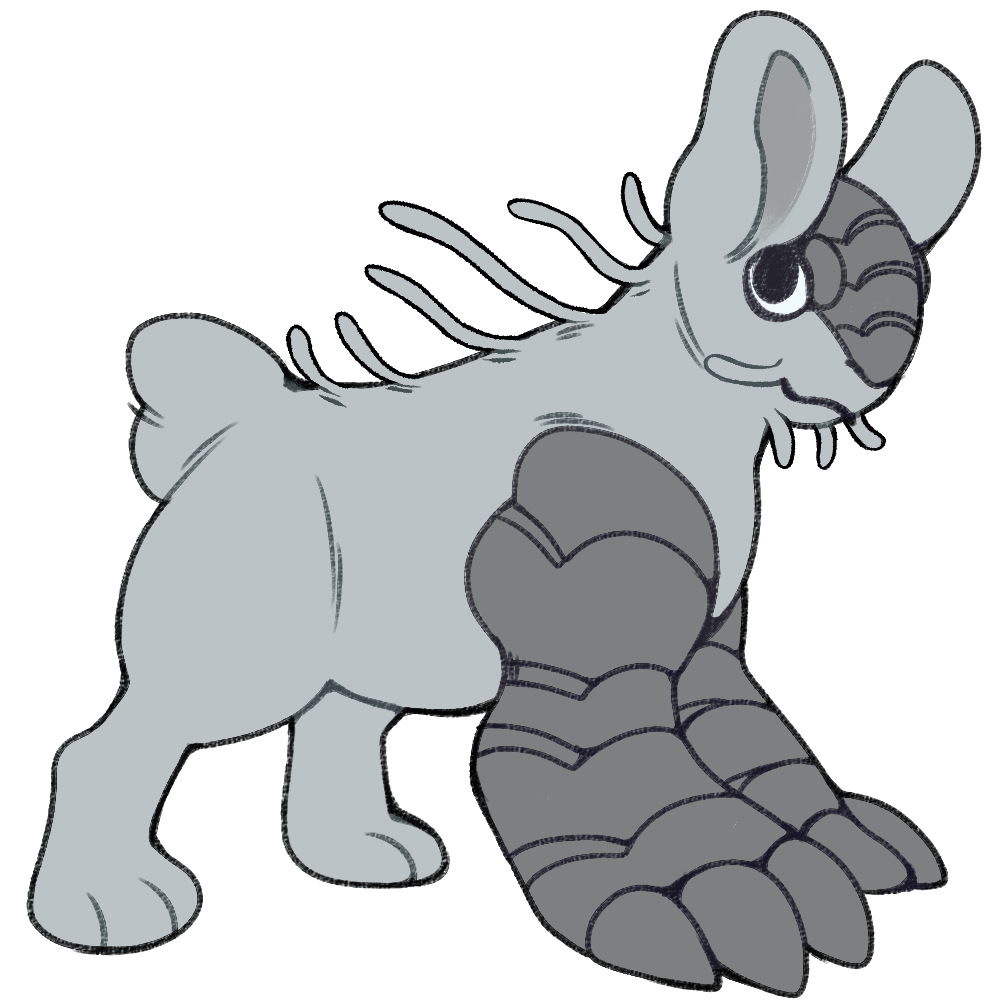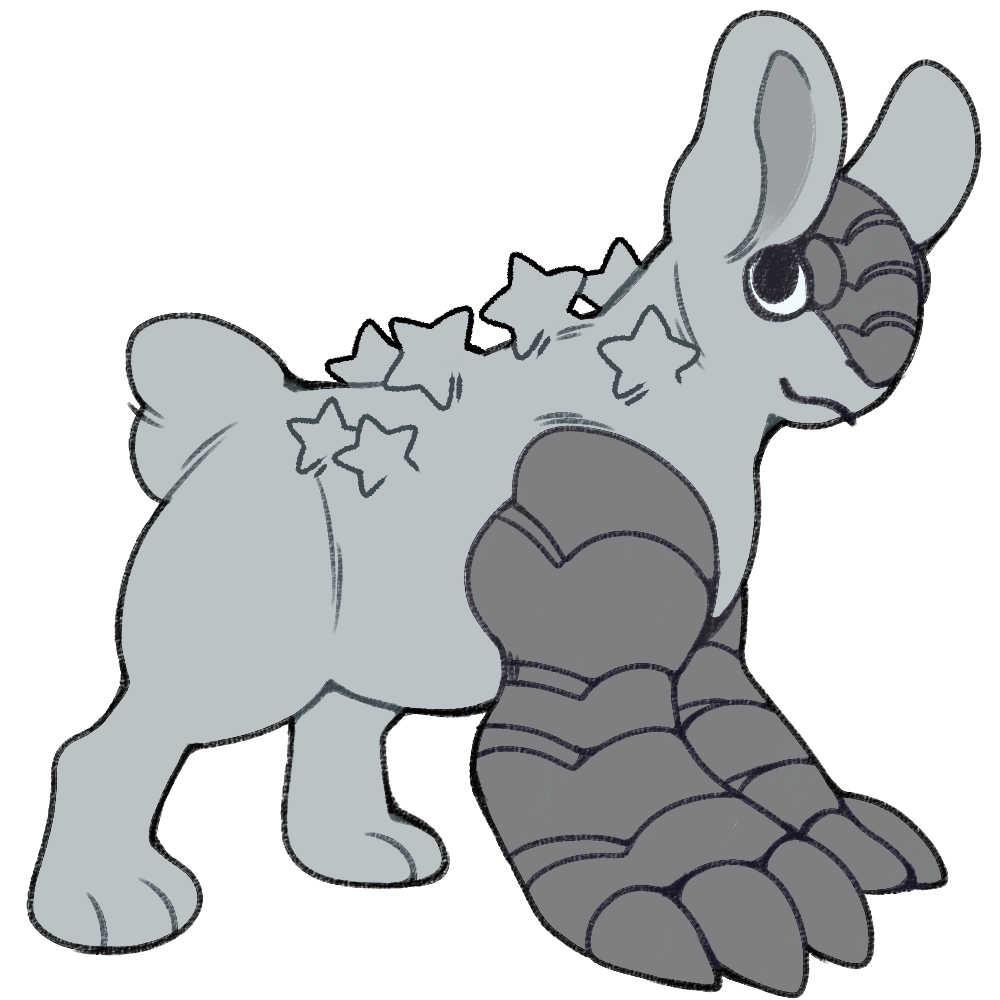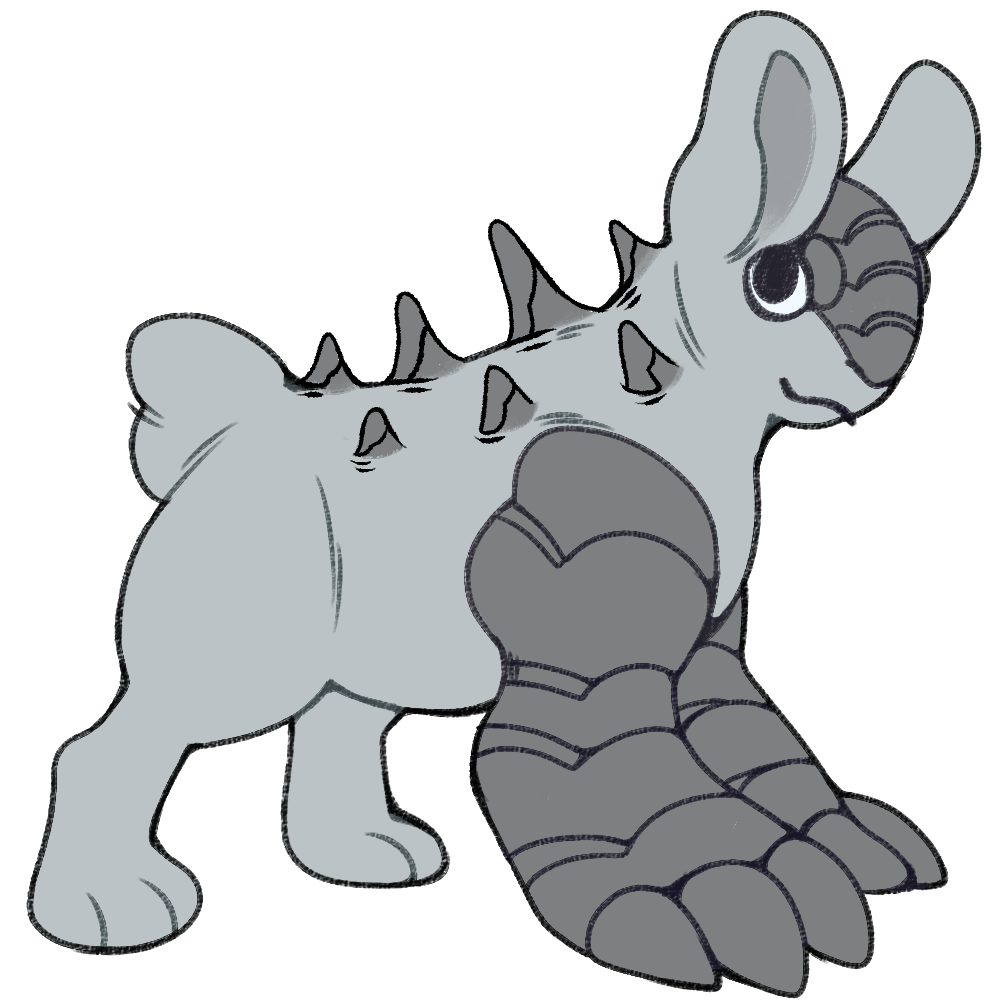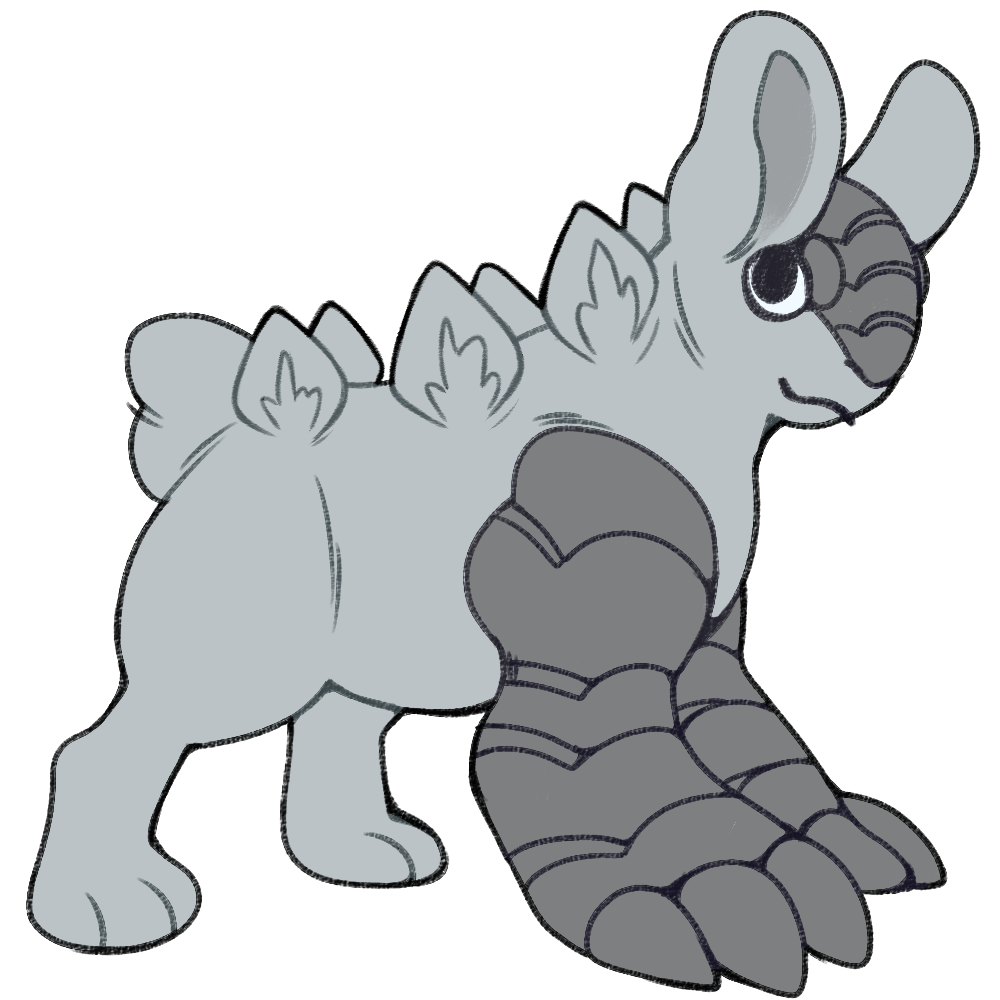Traits
Spiked Ears (Mutation)
These ears seem to have large, outward spikes and can have either very little fur or be fully covered. When using their vents, vabbits with this ear type will pin them back to protect the inner ear from the heat given off by steam.
Wrapping Paper Ears (Winter)
This ear trait gives vabbits a unique type of ear that forms layers of a thick paper-like material that behaves similarly to the protective fluff sometimes seen in their ears. Each layer of this wrapping paper-like material has unique patterns and when it comes into contact with heat it will protect the ear while slowly wearing down and crinkling toward the base of the ear to reveal the next layer.
Droopy Ears (Mythic)
This ear type is extremely long and droopy, often being as long as the vabbit is tall, and may even drag on the ground. Vabbits with this trait tend to tie up or braid their ears to keep them out of the way and protect the sensitive inner ear from their own steam.
Batty Ears (Standard)
Vabbits with this ear type tend to have large, pointed ears that resemble those seen on bats. These ears tend to have some type of ridges present on the inside of the ear.
Ribbon Ears (Mutation)
These long springy ears can form in lose or tight coils that the vabbit can control at will and when using their steam they will often coil them into tight cones to protect the sensitive inner flesh of the ear.
Shaped Ears (Mutation)
This ear type allows a vabbit to have a variety of simply shaped ears (heart, star, music note, fish, etc.), these ears can be either upright or flop downward and vary from one vabbit to another.
Spiral Ears (Mutation)
This unique ear type gives vabbits long, curling ears that can form into either soft or tight spirals that resemble sea shells.
Hooty Ears (Mutation)
These short, feather-covered ears have a completely covered inner ear and can emote in small ways from folding down to standing upright and rotating as the mhoat wishes. They tend to resemble the tufts seen on owls and other birds.
Dobie Ears (Mutation)
Vabbits with this trait form slender upright ears that resemble the cropped ears seen on dogs such as dobermann. When releasing steam, the edges of these ears actually curl inward to protect the sensitive inner skin of a vabbit's ear.
Pretzel Ears (Mutation)
Vabbits with this ear type form ears that can resemble a variety of pretzels be they classic, knots, braids, and so on. These ears tend to have very little of the inner ear showing, usually only forming as small holes in spaces where the pretzel overlaps itself to form the shape, to the point that multiple small openings can form to display the inner flesh color. Additionally, these ears form little salt-like deposits resembling the salt often found on pretzels.
Mouse Ears (Standard)
This trait gives vabbits large round ears that resembles those seen on mice.
Butterfly Feelers (Mutation)
This trait causes butterfly wing-like feelers to form all over the vabbit's body. These can be fairly simplified or resemble any type of wings seen on butterflies and can present with any colors and patterns as they are part of the vabbit's body and covered in the same fur as the rest of their body.
Alternate Types Show
-
Butterfly Feelers (Mutation)
Species: Gellys
This trait allows a gellys to form a variety of butterfly wing-like feelers that can cluster in pairs or individually all over the body. Some gellys may only have a few of these feelers, but others could be almost entirely covered.
Cherub Feelers (Mutation)
This type of feeler allows a vabbit to form small bird-like wings across its body and they are able to be manipulated forward and backward as the vabbit wishes.
Tufty Feelers (Standard)
Vabbits with this trait form a collection of small tuft-like feelers that resemble the crests seen on crested and rockhopper penguins.
Fluffy Feelers (Mutation)
This trait causes a vabbit to form long fluffy feelers that resemble those seen in moths but these can form all over the vabbit's body.
Mudpuppy Feelers (Standard)
Vabbits with this trait form feelers with a thick base and frilly extrusions that resemble those seen on mudpuppies and axolotls. They have no aquatic function but do seem to have a basic sensory ability that a vabbit can use to measure its surroundings in dark spaces.
Slim Feelers (Standard)
Vabbits with this trait form feelers that are long and slim which are either one width throughout or large at the tip and taper; these feelers can form all over the mhoat's body. Sometimes these feelers will form fluffy tips at the ends.
Shaped Feelers (Mutation)
This trait causes clusters of shaped feelers to form on a vabbit's body and these antennae can be simple shapes like stars, hearts, crescents, and other such shapes.
Stalagmite Spines (Standard)
Vabbits with this trait form spines all over their body that tend to be the coloring present on their plates. These spines can be smooth or have an almost rocky quality dependent upon artist preference.
Stego Feelers (Mutation)
These feelers resemble a variety of scutes found on dinosaurs such as stegosaurs, while these feelers are simple they have the unique quality of glowing when a vabbit releases steam. The color of the glow is similar to the plates or inner flesh present on the vabbit.
